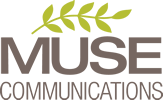How to Recycle Your Best Content to Market Your Law Practice
Many lawyers spend countless hours preparing CLE presentations, writing informative blog posts, giving media interviews, and generally creating informative content of interest to their clients, prospective clients, and referral sources.
The smartest lawyers find ways to get multiple uses out of those efforts by recycling their content in a variety of other formats.
Recycling your best content – particularly “evergreen” content that’s not tied to a breaking news story, such as a court ruling or current event – can save you time and effort and give you valuable material that you can use for months or even years.
Need help turning your legal marketing to-do list into reality? We can help with that! Just drop us a line. Muse Communications was named one of Texas’ best legal public relations firms by the readers of Texas Lawyer.
Two Ways to Recycle Content
The two main ways to recycle your content are:
Take a single piece of cornerstone content and carve it up into multiple formats.
Create evergreen content that can be periodically updated and re-used for as long as you want.
These two approaches can overlap as well, where you create an evergreen piece of content and use it in multiple formats. But, for the purposes of this blog post, we’ll treat them as separate animals.
The First Way: TURKEY TIME
For the first method – carving up your cornerstone content into multiple formats – my favorite analogy is the Thanksgiving turkey: On Thanksgiving Day, you eat it straight up. But for the next week, you’re feasting on turkey soup, turkey enchiladas, turkey sandwiches … (you get the picture).
Some examples:
Cornerstone content: a 1-hour CLE presentation
Turn the slideshow into a video and upload it to LinkedIn. (We love Canva for creating easy animations for things like this.)
Condense the presentation into a downloadable PDF white paper
Break the white paper up into 2-3 blog posts
Re-publish the blog posts as LinkedIn articles
Break up the main points into multiple posts on LinkedIn (linking back to your blog)
Include in your law firm’s monthly/quarterly newsletter
Cornerstone content: a podcast where you talk about FAQs related to your legal topic
Post the video to your YouTube channel
Break it up into 30-second snippets and post to LinkedIn (don’t forget captions)
Transcribe and edit it into a Q&A blog post
Break up the main points into multiple social media posts linking back to the blog
Include in your law firm’s monthly/quarterly newsletter
Cornerstone content: a meaty blog post laying out, for example, “5 Important Things Executives Need to Know About Non-Competes.”
Republish the blog post as a LinkedIn article
Turn it into a LinkedIn video post so it looks like a slideshow. (We love Canva for creating easy animations for things like this.)
Break it up into five different social media posts, each linking back to the blog
Include in your law firm’s monthly/quarterly newsletter
Cornerstone content: A blog post about a breaking news story
Assuming your “hot take” is hot enough, pitch it to an industry publication, either for reprint (or, if your blog post hasn’t run yet, for publication before you publish it) or for a news story
Re-publish the post as an article on LinkedIn
Turn it into a social media post, linking back to the blog
Include in your law firm’s monthly/quarterly newsletter
The Second Way: EVERLASTING GOBSTOPPER CONTENT
Willy Wonka may not have been a content marketer, but when he invented the Everlasting Gobstopper – candy that lasts forever – he was definitely speaking our language. (And presumably keeping up boat payments for lots of fictional dentists as well.)
With Everlasting Gobstopper content, you have one perennial item that you can lightly edit and use again and again.
The best time to think about whether you can recycle your post is when you’re writing it. Ask yourself, “Is this something my clients ask me year after year?” If so, congratulations, you have your Everlasting Gobstopper content!
One word of warning: Always remember to review your content before you re-publish it to make sure it doesn’t provide outdated info or discuss no-longer-current events. Also, maintain the same URL (the web address) so that any previous links to that content will still work.
Then, you’re ready to continue using it on social media. You can reasonably use the same content every 60-90 days on LinkedIn.
One question I get about recycling previously published content is “Won’t people say ‘Hey, didn’t you already publish this?’” To which I reply, “Do you remember what someone posted on their social media a year ago, or even last month?”
If this were the 1970s and your media options were the three broadcast networks, PBS, and whatever local station showed Gilligan’s Island, I’d say, “Yes, this is a concern.”
But we’re in a different media environment entirely. Great content is created and consumed at an alarming pace, so trust me, nobody will notice if you update an article you published a year ago and re-promote it on your social media.
Plus, if you’re marketing yourself, you are probably gaining new followers on LinkedIn, new subscribers to your firm’s newsletter, and generally being found by people who hadn’t heard of you a year ago. So, if nothing else, you’re bringing those people up to speed on the great information you’ve already shared.
Real-World Examples of Turkey and Gobstopper Content
Demetrios Anaipakos, Alavi Anaipakos: Demetrios was interviewed on lawyer civility in Law360. The firm published a blog post summarizing the interview, linked back to the Law360 article, and shared the update on the firm’s LinkedIn, which generated 31 reactions. (32 if you count Muse!).
María Amelia Calaf (MAC), Botkin Chiarello Calaf: MAC appeared on the Austin Bar Association’s Council of Firsts podcast, where she discussed her mentorship journey and how she supports young attorneys. The firm published a blog post highlighting memorable quotes, and shared the post to social media. The podcast is also embedded as a YouTube video on the post, so visitors can watch the content without navigating away from the firm’s site.
Matthew Naftis, Brousseau Naftis & Massingill: The firm recently refreshed and republished a 2021 article Matt wrote on employee handbooks in the time of COVID. Now that most of the COVID-related laws have lapsed, the article required a quick facelift. We updated the URL, added a re-route to the old URL, and promoted the post in the firm’s quarterly newsletter and on social media.
And, here at Muse Communications, we’re always diving back into our Greatest Hits album and finding ways to refresh evergreen pieces of content with new statistics, studies, and timely examples. (Like this very blog post, which was originally published in 2018 and has become a Thanksgiving Muse tradition.)
There are opportunities to recycle all around you. So, the next time you pour yourself into a CLE presentation or a blog post, give some thought to how you can get more than one use out of all that work.
Amy Boardman Hunt is all about helping lawyers find their voice and showcase their expertise. When she’s not doing that, she’s trying to find great hiking spots in Dallas. If you know of any – or you need a legal marketing muse – drop her a line at amy.hunt@muselegalpr.com.


